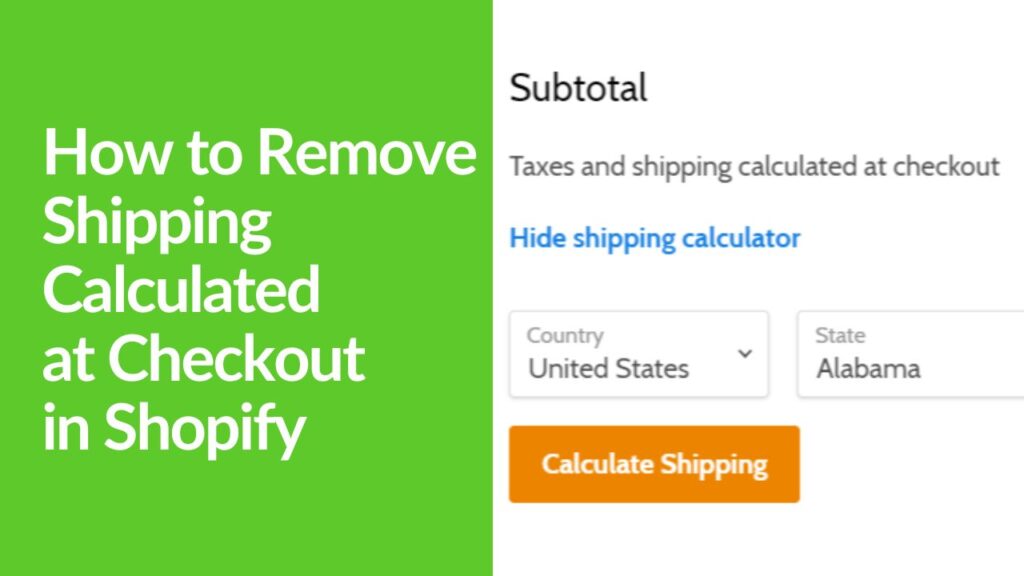In today’s digital landscape, where every click matters, understanding how to conduct a conversion rate audit can be the key to unlocking higher profits and better customer engagement. But fear not, conducting a conversion rate audit doesn’t have to be intimidating or complex. This step-by-step guide will walk you through the process of conducting a thorough conversion rate audit. We’ll break down the process into simple, actionable steps that anyone can follow.
Introduction to Conversion Rate Audit
So, you’re ready to rev up your website’s performance and turn more visitors into loyal customers. But before we jump into the nuts and bolts of conducting a conversion rate audit, let’s get back to basics and clarify what exactly we mean by “conversion rate.” Simply put, it’s the percentage of folks who visit your website and actually do what you want them to do – whether that’s making a purchase, subscribing to your newsletter, or reaching out through a contact form. By systematically analyzing various aspects of your website or digital platform, you can identify strengths, weaknesses, and opportunities for improvement in converting visitors into customers.
How a Conversion Rate Audit can help scale your e-commerce business:
- Identifying Weak Points: By conducting a comprehensive audit, you can pinpoint specific areas of your website and sales funnel where potential customers may be dropping off or encountering obstacles. This could be anything from poorly optimized product pages to complicated checkout processes.
- Optimizing User Experience: Improving the overall user experience (UX) of your website is crucial for increasing conversions. A Conversion Rate Audit can highlight UX issues such as slow loading times, confusing navigation, or lack of mobile responsiveness. By addressing these issues, you can create a smoother, more enjoyable shopping experience for your customers, leading to higher conversion rates.
- Refining Marketing Strategies: The audit can also evaluate the effectiveness of your marketing efforts in driving traffic and conversions. It can assess the performance of your ads, email campaigns, social media presence, and SEO strategies. By identifying which marketing channels are bringing in the most qualified leads and which ones need improvement, you can optimize your marketing budget and focus on tactics that yield the highest return on investment.
- Enhancing Product Presentation: Your product pages play a critical role in convincing visitors to make a purchase. A Conversion Rate Audit can analyze the layout, imagery, product descriptions, and call-to-action buttons on your product pages to ensure they are compelling and persuasive. Making adjustments based on audit findings can lead to increased engagement and higher conversion rates.
- Streamlining Checkout Process: One of the most common reasons for cart abandonment is a complicated or lengthy checkout process. By examining each step of the checkout process, from adding items to the cart to completing the purchase, a Conversion Rate Audit can identify any unnecessary friction points or barriers. Simplifying and streamlining the checkout process can reduce cart abandonment rates and increase conversions.
Overall, a Conversion Rate Audit provides valuable insights into how well your e-commerce website is performing and what changes you can make to optimize conversion rates. By addressing weaknesses and implementing improvements based on audit findings, you can effectively scale your e-commerce business and drive greater revenue growth.
What is a Conversion Rate Audit?
Now, let’s talk about the conversion rate audit itself. Picture it as a deep dive into the inner workings of your website or marketing campaign, like a detective searching for clues to crack the case of lackluster conversions. We’ll be scrutinizing everything from the overall design and user experience to the finer details like your messaging and the effectiveness of your call-to-action buttons.
Each component we examine during the audit plays a crucial role in influencing whether visitors stick around and take action or bounce off elsewhere. By dissecting these elements with a fine-tooth comb, we can uncover any roadblocks or missed opportunities standing in the way of optimal conversion rates. So, get ready to roll up your sleeves and uncover the hidden gems that’ll transform your website into a conversion powerhouse.
Step-by-Step Guide to Conducting a Conversion Rate Audit
Now that we’ve got the basics covered, let’s delve into the step-by-step process of conducting a conversion rate audit:
1. Define Your Goals
The first step in any conversion rate audit is to clearly define your goals. It’s like setting the destination on your GPS before starting a road trip. Take a moment to clearly outline what actions you want your website visitors to take. Whether it’s making a purchase, submitting a form, or downloading a resource, having these goals defined will serve as your North Star throughout the audit.
2. Review Your Website Analytics
Next, dive into your website analytics to gather data on your current conversion rates. Time to put on your detective hat and gather some clues. Dive into your website analytics using tools like Google Analytics. Pay attention to metrics like bounce rate, average session duration, and conversion funnels. This data is like a treasure map, revealing where potential bottlenecks or opportunities lie within your website.
3. Examine User Experience (UX)
User experience plays a crucial role in determining conversion rates. Now, let’s put ourselves in the shoes of our visitors. Take a stroll through your website and see it from their perspective. Is the navigation smooth, or do visitors seem to hit dead ends? Does the layout guide them toward your desired actions, or are there obstacles in their path? Jot down any UX issues you encounter – they could be the key to unlocking higher conversion rates.
4. Assess Your Content
Content is the backbone of your website, the voice that speaks to your audience. Take a deep dive into your content, from product descriptions to blog posts and landing pages. Are they engaging, informative, and relevant to your audience’s needs? Assess whether your content effectively communicates your brand’s value proposition and addresses the pain points of your target audience.
5. Optimize Your Call-to-Actions (CTAs)
Your CTAs are like signposts guiding visitors toward the actions you want them to take. Review their placement, design, and messaging to ensure they’re impossible to ignore. Are they clear, compelling, and strategically placed throughout your website? By optimizing your CTAs, you can encourage more visitors to take the desired action and boost your conversion rates. Your call-to-action buttons play a crucial role in prompting visitors to take the desired action.
6. Test Your Forms and Checkout Process
Forms and checkout processes are common points of friction that can impede conversions. Put yourself in your customers’ shoes and test every step of the process. Are there any hurdles like long loading times, confusing fields, or technical glitches? By streamlining these processes, you can remove barriers to conversion and create a smoother experience for your customers, ultimately improving your conversion rates.
7. Analyze Traffic Sources
Understanding where your website traffic is coming from can provide valuable insights into the effectiveness of your marketing efforts. Analyze traffic sources such as organic search, social media, and email campaigns to identify which channels are driving the highest quality traffic and conversions.
8. Implement A/B Testing
A/B testing involves creating variations of your website elements (such as headlines, images, or CTAs) and comparing their performance to determine which version yields the highest conversion rates. Ever wished you could peek into the minds of your website visitors to see what really grabs their attention?
Well, A/B testing is the next best thing. By creating different versions of elements like headlines, images, or CTAs and comparing their performance, you can uncover what truly resonates with your audience. This data-driven approach empowers you to refine and optimize your website continuously, based on real user behavior.
9. Track and Measure Results
Once you’ve made changes based on your conversion rate audit findings, it’s crucial to track and measure the results. Making changes is just the first step – now it’s time to see how they stack up. Keep a close eye on key metrics like conversion rates, bounce rates, and revenue to gauge the impact of your optimizations. Think of it as keeping your finger on the pulse of your website’s performance. This data not only validates your efforts but also provides valuable insights into areas that may need further attention or tweaking.
10. Stay Updated and Adapt
In the ever-changing world of digital marketing, staying stagnant is not an option. Keep your radar tuned to the latest trends and best practices in conversion rate optimization. Attend industry conferences, subscribe to newsletters, and never stop learning from both successes and failures. Think of it as staying one step ahead of the game – always ready to adapt and evolve to meet the shifting demands of your audience and the digital landscape.
Conclusion
Conducting a conversion rate audit is a vital step in optimizing your website for better performance and increased conversions. By following the step-by-step guide outlined above and continuously iterating based on data-driven insights, you can unlock the full potential of your online presence and drive meaningful results. Remember, conducting a conversion rate audit is an ongoing process, and continuous optimization is key to long-term success.
Frequently Asked Questions (FAQs)
Why is conducting a conversion rate audit important?
Conducting a conversion rate audit is important because it helps identify areas of improvement on your website or marketing campaigns that can lead to increased conversions and revenue.
How often should I conduct a conversion rate audit?
It’s recommended to conduct a conversion rate audit regularly, at least once every few months, to ensure your website is continuously optimized for maximum conversions.
What tools can I use to conduct a conversion rate audit?
There are several tools available for conducting a conversion rate audit, including Google Analytics, Hotjar, and Optimizely, among others.
What are some common pitfalls to avoid during a conversion rate audit?
Common pitfalls to avoid during a conversion rate audit include ignoring mobile users, neglecting to test different variations, and failing to track and measure results effectively.
How long does it take to see results from a conversion rate audit?
The timeframe for seeing results from a conversion rate audit can vary depending on the extent of changes made and the level of optimization needed. However, many businesses start to see improvements in conversion rates within a few weeks to months after implementing changes.




